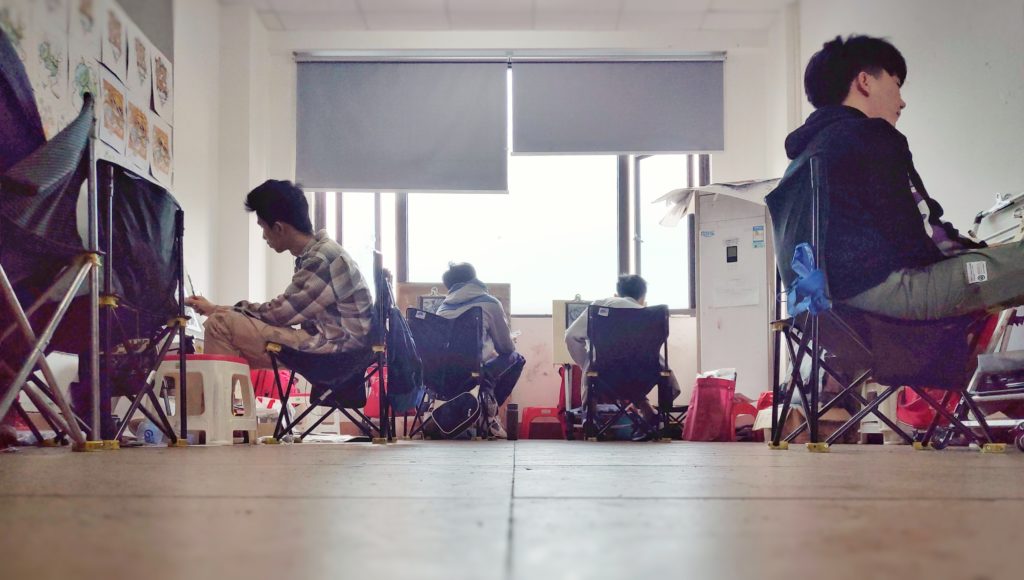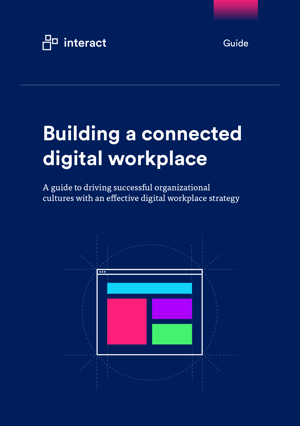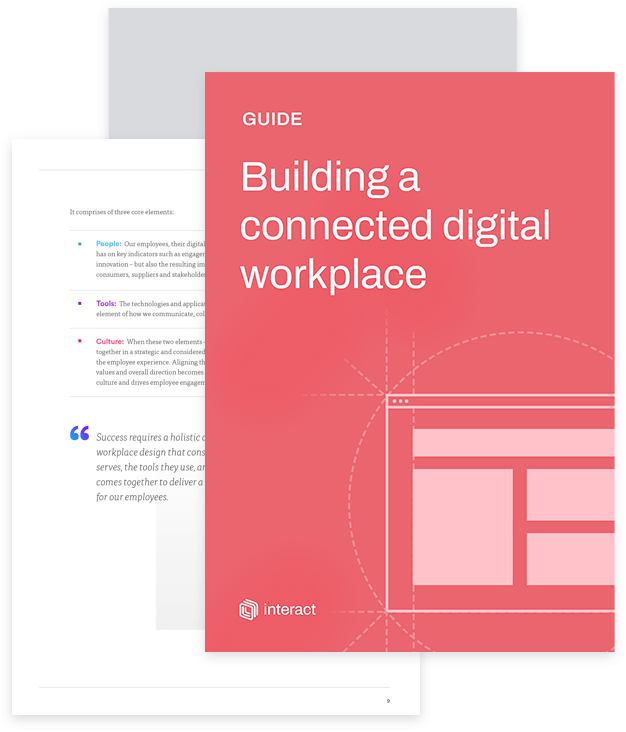It’s been a year of transformation on every level: digital, global, organizational, societal, and personal. While some change has often felt overwhelming, what has come out of this whole experience is innovation and new ideas. So what did we learn from the crisis of 2020, and where do we go from here?
Things will probably never be the same again, and in some ways, this is a good thing. Perhaps, when it comes to business and its numerous areas for improvement, 2020 was the shake-up we all needed.
This was the year that events forced our hands to make fast decisions, significant changes, and reassess what our goals were.
In business, this enforced process of rapid digital transformation has seen many of the traditional ‘blockers’ to change be removed for us. We’ve had to move forward, and apply innovative workarounds in order to drive business continuity in extraordinary circumstances.
It’s a year we’re unlikely to forget. Twelve months that changed the way we live, socialize and work. But out of the chaos of 2020, what are the lessons we can bring with us?
We started with a necessity to respond to the outbreak crisis. Now, it’s time to apply a long-term mindset, particularly considerations of another crisis potentially happening again.
A reminder that communication is everything

For many of us, we were reminded this year that communications were more important than ever before – and we made sure to prioritize this every step of the way.
Whatever your business is going through, organizational change, growth, challenges, it’s important to realize that a workforce can quickly pick up on a change in mood, and it’s not long before your employees will have likely realized that something is afoot. It’s therefore recommended that communications are part of any considered plan as soon as any news develops.
The absence of comms can have a debilitating effect on employees and workplace culture. When no news is communicated, it provokes a lot of unease, rumor, and speculation. It’s always best to address these things as soon as possible, even when you may not have many answers to the inevitable questions.
Of course, many developments within a company need to be handled with sensitivity. This is likely to be privileged information in the early days. However, bringing in internal communications early on in the process can help shape messaging or positioning and develop a comprehensive comms plan to reach all the necessary stakeholders involved. Setting up a collaboration between Comms, HR, and PR will ensure all messaging is aligned – and no-one is missed.
Building a connected digital workplace
It’s a stage of crisis management that should never be overlooked. As the saying goes, “In teamwork, silence isn’t golden, it’s deadly.” We’ve learned that employees can take on information and process it accordingly. Speculation and rumor, on the other hand, have a far more pernicious effect.
Diversity and inclusion should no longer be buzzwords

How did your company address diversity and inclusion in 2020? After the headline news of early summer, it was clear this was an area that was deserving of some well overdue examination. And many organizations are continuing to work extra hard on how they approach talent acquisition and retention. Finally, welcoming diversity into the workplace is not just a box-ticking exercise; it’s a must-have. In the 21st century, it is both a corporate benefit and an ethical and moral priority.
According to studies, an estimated £24 billion a year could be added to GDP if the UK workplace ensured full representation of BAME individuals across the labor market. Women’s equality across the world could add $12 trillion to global growth. Going forward, businesses need to tap into this wealth of talent and create an equal workplace for everyone.
But inequality comes in many guises: race, gender, age, location, sexuality, creed. In our workforce, roles, and promotions, pay raises, and rewards should be given on individual merit. But that’s not what’s happening. And with people focusing more and more on diversity in the workplace, it will soon be a case that if you aren’t already honing your D&I policies now, your employees will inevitably vote with their feet.
The hybrid workplace is the future…

This year demonstrated that working from home isn’t the productivity off-switch that fear-mongers warned of. It has been shown that success is still achievable outside of the physical boundaries of an office. Initial lockdown proceedings saw many organizations roll-out large-scale remote working with little understanding of how long it might last. And now, many months into the process, research and anecdotal evidence suggest it’s here to stay: even beyond the pandemic.
But we’re now facing the reality that our ‘new normal’ may not match the environment or needs we identified before the pandemic. Workforces may continue working remotely, either full-time or in a hybrid format, for the foreseeable future. We’ll need to adapt our customer or client operations to meet new standards for service provision safely. It’s time to make those digital workplace models more robust.
Naturally, organizations will differ in terms of their long-term objectives for working models; some will never be the same as before. But business leaders will soon need to decide on whether they become fully or partially remote, or take a hybrid approach.
…And the digital workplace will need to respond quickly

A large part of achieving this hybrid workplace is ensuring the tools and platforms that support staff working from home need to work in harmony with in-house solutions, supporting both ways of working intuitively and simply.
Staff must be able to move from one state to another without it jarring with their overall digital employee experience: calling for considerations around accessibility, access, integrations, and authentication.
Building a connected digital workplace
Working remotely should be as simple as working within the office, and vice-versa; centralized and cloud-based document management, easy access to information, and the ability to log into all applications regardless of location is vital.
In the same vein, creating the same spaces and ways of working that we see in the office is essential in the digital realm. Many have mastered variations of this, creating digital spaces for a variety of collaboration models or ways of working.
The question is whether our organizations can progress to a hybrid variation: staff in-office meeting with colleagues working remotely without any hindrance to productivity, engagement, or experience. Evaluating existing digital workplace tools for their effectiveness in both scenarios and addressing gaps must inform ‘new normal’ digital workplace strategy.
Automation is key to sustainability

Speaking of digital workplaces, automation will start to become more developed as we experience a more hybrid way of working. As remote working becomes more mainstream, organizations will need to introduce software and tech that supports the employee when there is no physical employer presence. This software will be designed to offer a human-like, easy-to-use, and accessible service: an optimal employee experience.
For example, without an HR department for people to speak to face-to-face, set up meetings, and visit, this part of the business will be one of the first to rely on smart tools. Using software to communicate with the worker regarding annual leave, health, work-related issues, the employee still enjoys the same levels of confidential service, while the department receives clear and precise data that they can analyze and work on.
Cell phones and devices, once seen as distinctly anti-office, will become as essential to working as the laptop. Processes will run off handsets , furthering the ‘work anywhere’ inevitability.
Focusing on your employees’ mental health is critical

The impact on mental health this year has been considerable. According to a study of 16,000 people carried out by Mind, more than half of adults (60%) and over two-thirds of young people (68%) said their mental health deteriorated during lockdown. This year has been particularly challenging for everyone.
In the middle of layoff announcements and cuts, employees are struggling to manage the balance of work, relationships, children, and families. While working from home does have its benefits – no commute, casual dress, flexibility – the isolation and loneliness of this pandemic have been devastating for the morale of our workforce.
According to a study of 16,000 people carried out by Mind, more than half of adults (60%) and over two-thirds of young people (68%) said their mental health deteriorated during lockdown. The research showed that many developed new mental health problems as a result of the pandemic, and, for others, existing mental health problems worsened.
Building a connected digital workplace
But work has managed to find ways to help the mental and emotional burden of this year through workplace friendships, daily chats, projects, and the careful handling by managers to up communication, flexibility, one-to-ones, and social time. This year has shown how important work is in people’s lives, and therefore the responsibility that organizations have in managing every individual in the workforce.
It falls on us as organizations to continue this focus, and develop strategies that allow the health of our employees – both physical and mental – to be a prime concern going forward.
Importance of leadership communications

How did your leaders shape up in 2020? Those who experience excellent leadership visibility throughout this year experienced greater engagement than those who didn’t. This year, we quickly realized the value of leadership comms and their impact on staff motivation.
When an organization undergoes any significant event, change, or is responding to a crisis situation, this is the point at which a figurehead at the front becomes essential.
Your remote workers need the reassurance, authority, and accountability offered by an individual – or individuals – in the driving seat of managing your crisis response. Issuing blanket updates from ‘[insert-business-name-here]’ is perceived as distant, cold, and can further perpetuate feelings of fear and uncertainty.
In many instances, it will also cause anger at leadership for ‘hiding’ behind corporate statements – particularly if a remote worker’s previous connection to an organization or its leaders is weak or lacking.
While you may have a team of individuals contributing to response efforts, limiting official updates to come from just one – or a couple – of individuals provides continuity and stability. There’s a reason we look to our presidents, prime ministers, or first ministers when crisis situations arise. Too many cooks can dilute the messaging, reduce authority, and confuse staff.
With entire organizations working from home, there was a clear and present danger of businesses becoming faceless. It was only through hearing from our leaders that feelings of anxiety and discontent were quelled. And these comms weren’t particularly significant – even when there were no answers, we found a short update was enough to boost morale, improve productivity, and employee satisfaction. With employees now at risk of isolation, loneliness, and disconnect from their organization, all it took was a message from those in charge to dispel negativity.
Virtual culture building is a big priority

The pandemic has shown that one of the greatest gaps in our existing digital workplaces is the social, interpersonal element that connects staff both to the organization and one another.
Although cited as one of the most significant challenges for remote workers long before the pandemic, few organizations showed the ability to translate the often-intangible aspect of ‘culture’ into a virtual space.
The surge in virtual town halls, company or team quizzes, virtual drinks, and more has shown creativity in keeping organizational cultures alive in the coronavirus lockdown.
With lockdown measures in place across the globe, we had no choice but to get creative. Organizations and staff alike sought to build meaningful connections, re-create company spirit or team camaraderie, and find ways of bringing the social into digital workspaces.
The corresponding positive impact on productivity, morale, engagement, and more, makes a clear case for investing in our cultures.
As we embrace remote working for the long-term, it’s time to think about how digital workplaces can support our culture. The coming year will see this work through the embedding of social tools, rich content, means to share your mission, values, and success, to recognize employees, and give greater visibility of leadership.
Types of software, particularly a centralized intranet that embodies features to connect staff to their organization, will prove a crucial tool in facilitating, nurturing, and communicating those virtual cultures going forwards. Further still, they can create cohesion between physical and remote cultures: breaking down the siloes that have historically characterized the centralized vs. remote workforce.
The prevailing mood of 2020 has been largely negative, but out of the gloom, there have been some extraordinary things that have taken place. Significant cultural changes that will impact our working and personal lives in the future. A digital transformation of profound importance. And innovation which can only be borne from the struggle that we’ve experienced. These extraordinary circumstances will mark the way we do things going forwards.
Perhaps 2021 will be a global year of recovery, or perhaps it turns out to be a sustained exercise in damage limitation. But with the lessons carried over from the previous year, we’ll be in a stronger position that ever before to respond to future events.



